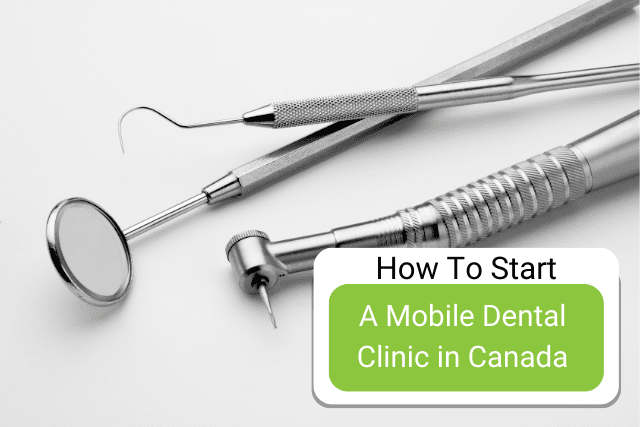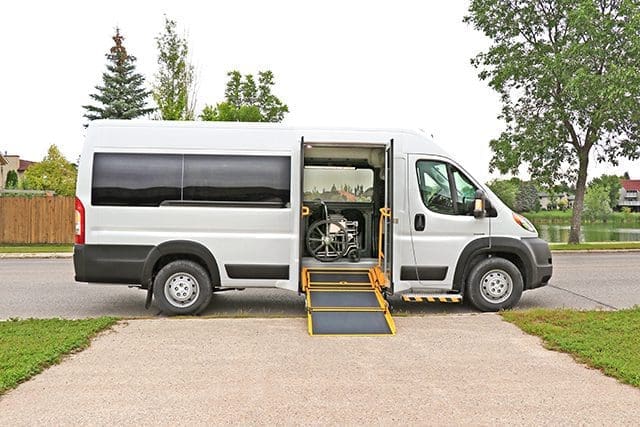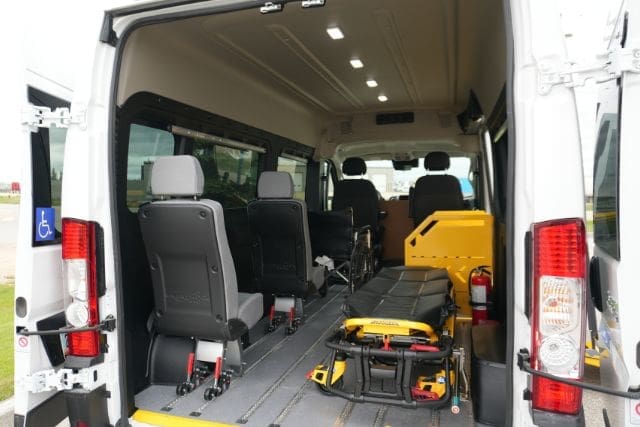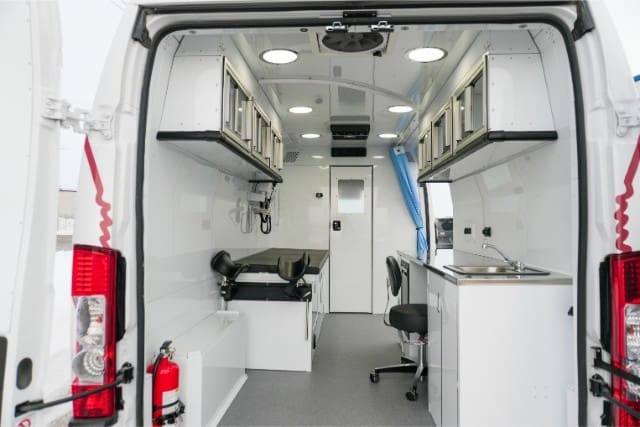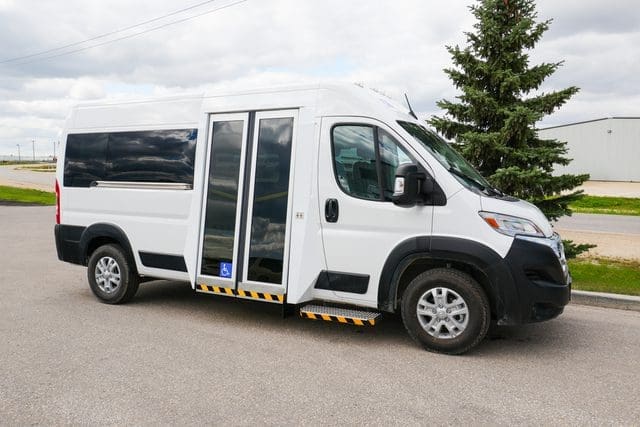Ever had a toothache so bad you couldn’t think straight? Now imagine living in a place where the closest dentist is hours away. That’s the reality for thousands of people across Canada—especially in rural and remote communities. They’re not avoiding dental care because they want to; they just can’t get to a clinic. That’s why more dental organizations are asking how to start a mobile dental clinic—to meet people where they are.
Without access to dental care, people suffer from painful infections, preventable tooth loss, and serious health risks linked to poor oral hygiene. But here’s the thing—this problem isn’t fixing itself.
I’m Andrew Burrowes, an account executive here at MoveMobility. I’ve spent years helping organizations like yours bring mobile healthcare and accessible transportation solutions to communities across Canada that need them most. Through my work at MoveMobility, I’ve seen firsthand how a well-designed mobile clinic can change lives.
I’ve worked closely with First Nations communities, health programs, outreach teams, and other community organizations across Canada, many of which had the same questions you have right now.
Starting a mobile dental clinic in Canada can feel like a big undertaking, but it doesn’t have to be overwhelming.
In this guide, I’ll answer some of your biggest questions about how to start a mobile dental clinic, including:
Defining your mobile dental clinic’s services: What treatments will your organization offer? Will you focus on hygiene, extractions, or full-service dentistry?
Choosing the right vehicle: What type of mobile dental vehicle works best? Do you need multiple rooms, or are you looking for something of a smaller scale?
Navigating regulations and licensing: What permits and certifications are required to operate legally?
Finding funding and financial support: What grants, government programs, or partnerships can help make this financially possible?
Planning operations and logistics: How will you schedule visits, manage staffing, and keep supplies stocked?
Let’s break it down together.
What’s the current state of dental care in Canada?
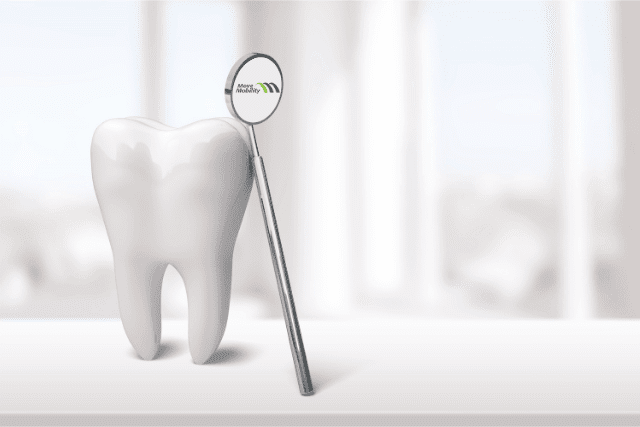
Most people don’t think about dental care until they have a problem. But for a lot of Canadians, getting to a dentist is inconvenient and, for others, nearly impossible. And when dental problems go untreated, they don’t just stay in your mouth. They turn into serious health issues.
Here’s what’s really happening:
Infections can turn deadly: Poor oral health has been linked to heart disease, strokes, and even life-threatening infections that spread through the body.
Hospital visits are on the rise: In Alberta alone, more people go to the emergency room for dental issues than for asthma or diabetes.
It’s costing people more than money: Every year, Canadians lose over 40 million hours of work and school because of dental problems.
It’s frustrating, I get it. I’ve spoken to so many health teams and community leaders who see people suffering but don’t have the resources to help. It’s not fair.
But that’s where mobile dental clinics come in. Instead of waiting for people to get to a dentist, your organization brings dental care to them.
So, how does your organization get started? Stay tuned to find out.
1. Define your mobile dental clinic’s purpose and service scope

Before jumping into vehicles and equipment, the first thing you need to figure out is what kind of mobile dental care you’re actually going to provide. Not all mobile dental clinics are the same, and the services you offer will shape everything else—from the type of vehicle you need to the funding you can apply for.
Who are you helping?
Start by thinking about who your clinic will serve. Different communities have different needs, so ask yourself these questions:
- Are you focusing on children who need preventive care like cleanings and fluoride treatments?
- Do you want to serve remote First Nations communities that need extractions and emergency care?
- Is your goal to provide full-service dentistry, including fillings, root canals, and dentures?
You should also consider high-volume locations where convenience matters just as much as access. Think large office buildings, corporate campuses, factories, and even schools—anywhere people struggle to take time off for a dental appointment. In these environments, a mobile dental clinic parked right in the lot means fewer sick days, less productivity loss, and a healthier workforce or student population.
Another group to consider? Temporary foreign agricultural workers. These workers are vital to Canada’s food supply, especially in places like the Niagara Peninsula, but many live in rural areas with little or no access to dental care.
Most don’t have vehicles and rely on bikes to get around, making it incredibly difficult to visit a traditional clinic. A mobile dental unit that comes directly to their housing or worksite could be a game-changer for their health and well-being.
The more specific you get, the easier it’ll be to figure out a mobile dental clinic design that actually works for your team and your patients.
What treatments will you offer?
Some mobile dental clinics only provide mobile hygiene services—cleanings, fluoride treatments, and exams. Others are fully equipped to handle fillings, extractions, and even dentures. The bigger the service list, the more specialized (and expensive) your setup will be.
If you’re just getting started, a good place to begin is:
- Preventive care: Cleanings, fluoride treatments, and sealants.
- Basic restorative care: Fillings, simple extractions
- Education: Helping patients understand proper oral hygiene
You don’t have to do it all. Start with the most critical services for your target community and expand from there. Something as basic as a mobile dental hygiene clinic can improve oral health for people all over Canada.
Why does this matter?
Defining the scope of your dental services in this first step will help you:
- Choose the right size and type of mobile dental unit
- Understand what equipment and supplies you’ll need
- Figure out what kind of licensing and staffing requirements you’ll have
- Identify funding options that match your mission
Once you know who you’re helping and what you’re offering, you’re ready for the next step: choosing the right vehicle.
2. Choose the right mobile dental clinic vehicle
While it might seem logical to discuss licensing and regulations next, we first need to discuss vehicles.
Why? Because the type of mobile dental clinic you choose will directly impact what regulations apply to you. A basic mobile dental hygiene clinic has different health and safety requirements than a fully-equipped dental surgery unit. Some permits even require you to provide exact vehicle specifications, layout details, and sanitation processes—all of which depend on what you’re driving.
So, let’s go through your options. Each type of vehicle has its own pros and cons, and what works best depends on who you’re serving, where you’re operating, and how much funding you have.
Mobile dental vans: Nimble, efficient, and easy to maneuver

A van-based mobile dental clinic is a great choice for organizations that need flexibility. These are designed for ease of navigation, making them ideal for urban environments, tight spaces, and frequent travel between multiple locations.
Best for:
- Preventive care
- Basic restorative services
- Outreach programs covering multiple locations
Advantages:
- Easier to drive and park in cities and small communities
- More fuel-efficient than larger vehicles
- Faster setup and breakdown for quick visits
Potential limitations: Limited space means it may not work if you need multiple operatories or a full surgical setup.
Mobile dental RVs: Large and ideal for extended stays
If your organization has a high budget and plans to stay in one location for extended periods, an RV-based mobile dental clinic could work. These vehicles provide ample interior space and allow for a more traditional dental office setup.
Best for:
- Larger programs with long-term funding
- Full-service mobile dental clinics that stay in one location for days or weeks at a time
Advantages:
- More space for equipment, staff, and multiple treatment areas
- Can include full dental suites with X-ray machines and sterilization units
Potential limitations:
- Expensive to purchase and maintain
- Difficult to maneuver in tight or remote areas
- Not as practical for frequent travel between locations
Mobile dental trucks: A middle ground between vans and RVs
Box trucks provide a little more interior space than a van while still being easier to drive than an RV or trailer. These are often customized into fully functional dental offices with room for multiple operatories.
Best for:
- Organizations that need more space but still want something drivable and mobile
Advantages:
- Decent amount of room for equipment and patient care
- Easier to drive than an RV or trailer
- Can be customized for different services
Potential limitations:
- Higher cost than a van
- Requires special licensing in some provinces
Mobile dental trailers: Large-scale, but not as mobile
A trailer-based mobile dental clinic offers the most space and can be outfitted like a fully functioning dental office. However, trailers require a separate towing vehicle and are not as mobile as vans, trucks, or RVs.
Best for:
- Permanent or semi-permanent mobile clinics that stay in one place for weeks or months
Advantages:
- Can include multiple treatment rooms
- Ideal for full-service dental operations
- Can be disconnected and left in place while the tow vehicle is used elsewhere
Potential limitations:
- Requires a towing vehicle and extra setup time
- Not ideal for organizations that need frequent mobility
- Difficult to maneuver in small or urban areas
Which vehicle is right for your dental organization?
The right choice comes down to your budget, the services you plan to offer, and how often you’ll be on the move.
- If you need something mobile, efficient, and easy to park → A van is the best fit.
- If you have major funding and plan to stay in one place longer → An RV or trailer makes more sense.
- If you need a balance between mobility and space → A box truck could be ideal.
Once you’ve decided on the vehicle, you’re ready for the next step: navigating licensing, regulations, and compliance.
3. Licensing, regulations, and compliance
When you’re first learning how to start a dental clinic in Canada, it’s not as simple as just buying a van and hitting the road. Wouldn’t that be fantastic? You need the right licenses, approvals, and safety measures in place before seeing patients. Each province has its own rules, so let’s break it down in a way that makes sense.
Check your province’s dental regulations
Every province and territory in Canada has different rules for mobile dental clinics. Some may need extra permits, while others follow the same rules as regular dental offices.
What to do:
Call your province’s dental regulatory authority. They will provide more insight into what you need to legally run a mobile dental clinic.
Here are a few examples:
Ontario: Royal College of Dental Surgeons of Ontario
British Columbia: College of Dental Surgeons of BC
Alberta: Alberta Dental Association
Keep a few things in mind when talking to these dental regulatory authorities:
Ask about permits and approvals. Some provinces require special approval for mobile dental clinics, while others treat them like regular dental offices.
Check patient record rules. Each province has rules on how you must store and protect patient records, even in a mobile setting.
Follow Health Canada rules
Since your clinic will use medical equipment and dental tools, Health Canada has some rules to follow.
What to do:
Make sure your dental tools are approved: If you’re using X-ray machines or other high-tech dental equipment, they need to be licensed in Canada.
If you handle medications, check if you need a license: Some mobile dental clinics store and distribute prescription medications. If that’s part of your plan, you may need an Establishment License from Health Canada.
Keep infection control a top priority
A mobile dental clinic still needs to be just as clean and safe as a regular office. Infection control is a huge part of your approval process.
What to do:
Follow the same sterilization rules as regular dental offices: This includes properly cleaning tools, disposing of waste, and sanitizing surfaces. The Canadian Dental Association has guidelines to help with that.
Train your team: Staff should know how to handle medical waste, use protective equipment, and prevent infections in a small, mobile space.
Get the right insurance
Mobile dental clinics come with risks, so insurance is a must before you start seeing patients.
What to do:
Get professional liability insurance: This protects you if a patient files a complaint about their care.
Get general liability insurance: This covers things like accidental injuries inside your mobile clinic.
Talk to an insurance provider who understands mobile healthcare: Not every insurance company covers mobile clinics, so be clear about what you need.
Always stay up to date with the regulations
Rules change all the time in dental medicine, so staying informed is important.
What to do:
Consider joining professional dental groups: The Canadian Dental Association and Canadian Dental Hygienist Association often post updates on new regulations:
Go to workshops and training sessions: Learning from other mobile dental providers will help you stay on track and avoid mistakes.
4. Funding your mobile dental clinic
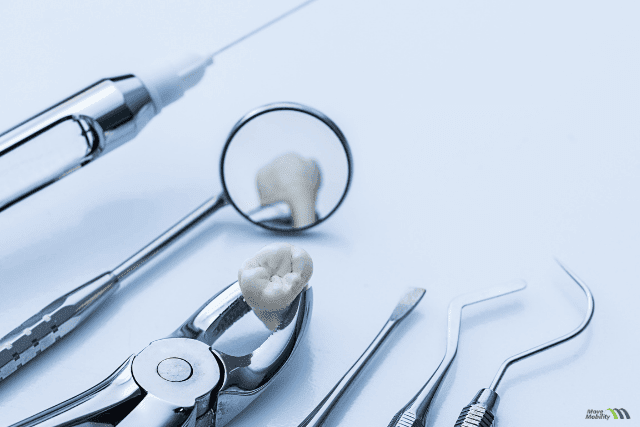
Let’s be real—starting a mobile dental clinic isn’t cheap. Between the vehicle, equipment, staffing, and everyday costs, the price adds up fast. But here’s the good news: there are grants, government programs, and partnerships that can help. You just need to know where to look.
I’ve worked with a lot of organizations that rely on funding to bring healthcare to underserved communities. And if there’s one thing I’ve learned, it’s that finding financial support can feel overwhelming. But it doesn’t have to be. Let’s go through some real options that can help make this possible.
Government grants & public funding
The federal and provincial governments are putting more money into expanding access to dental care, which is a big win for mobile clinics.
- Canadian Dental Care Plan (CDCP): This is Canada’s new federal dental program. While it doesn’t give direct funding to clinics, it covers dental care for eligible Canadians. That means more people will be looking for mobile dental services, and partnering with organizations that serve CDCP-covered patients could open doors to funding.
- Oral Health Access Fund: This program from Health Canada provides funding for projects that expand access to dental care, especially in remote and Indigenous communities. Applications for 2024 are closed, but it’s worth keeping on your radar for future funding rounds.
- Provincial & municipal programs: Some provinces and cities have their own funding programs to help expand dental care. A couple of examples:
- Ontario Seniors Dental Care Program funds mobile dental units for low-income seniors. https://www.ontario.ca/page/dental-care-low-income-seniors.
- BC’s Capital Project Grants have been used to fund mobile dental clinics in rural communities.
Non-profit & community partnerships
A lot of non-profits and dental charities are looking for ways to expand their impact, and mobile dental clinics fit into that. Partnering with them can open doors to funding, resources, and patient referrals.
Some partnerships worth considering are:
- Canadian Dental Association: I’ve mentioned this one a few times now, and for good reason. They provide resources and sometimes funding for programs that improve access to care.
- Local public health units: Many public health programs fund or collaborate with mobile dental services. Contact your local health department to see what’s available.
- First Nations & Indigenous health organizations: If you’re serving Indigenous communities, some funding may be available through Indigenous Services Canada.
Business & corporate sponsorships
Private companies often fund healthcare initiatives as part of their corporate social responsibility programs.
Here are a few ideas:
- Banks & credit unions: Many have community grants for healthcare projects.
- Dental suppliers & manufacturers: Some companies that sell dental equipment or materials might be open to donating supplies or sponsoring part of your clinic.
- Local businesses: If your clinic serves a specific community, local businesses may want to contribute to a community health initiative.
Crowdfunding & community fundraising
If traditional funding isn’t an option, you can turn to the people who believe in your mission. Community fundraising and crowdfunding platforms have helped a lot of healthcare initiatives get off the ground.
- GoFundMe – Best for individual donations from the community.
- FundRazr – A Canadian crowdfunding site that supports nonprofit healthcare projects.
- Corporate giving programs – Some companies match donations made by their employees to healthcare causes.
As you can see, funding a mobile dental clinic takes a mix of different strategies. Most successful programs use a combination of government grants, community partnerships, private sponsorships, and fundraising.
The key is to start small and keep looking for new opportunities. Grants open and close all the time, so staying connected with professional dental associations and public health networks can help you stay ahead.
5. Planning operations and logistics
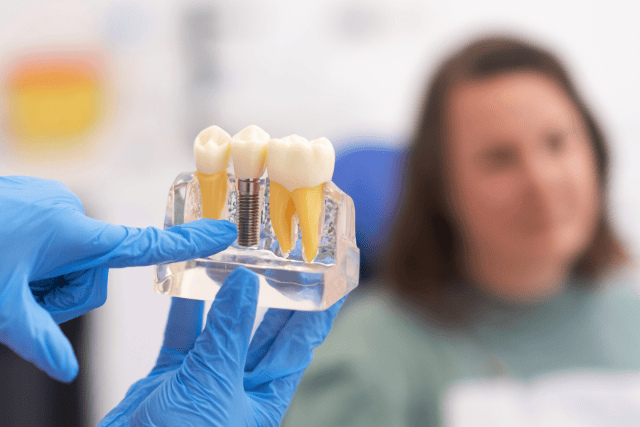
I know how much goes into running a mobile dental clinic. You’re juggling schedules, staffing, patient care, and supplies, all while making sure your clinic stays compliant and efficient. It’s a lot. But having the right plan in place can make all the difference.
At this stage, it’s all about forming your team and creating standard operating procedures that work best for your clinic. Let’s go over the key areas you’ll need to manage.
Scheduling: Where and when will you see patients?
Unlike a fixed dental clinic, you have to plan where your mobile clinic will be and when. The goal is to create a schedule that serves your patients while keeping your team’s workload realistic.
A few ways to approach scheduling:
Set up a route: If you’re serving multiple locations, a set route helps patients know when you’ll be in their area. For example, “Mondays in Community A, Tuesdays in Community B.”
Work with local health centers: Many mobile clinics partner with community health centers, shelters, and First Nations health programs to coordinate visits.
Offer appointment-based and walk-in options: Some mobile dental units run fully on appointments, while others allow for walk-ins, depending on patient needs.
The key is to stay consistent. If patients know when to expect you, they’ll be more likely to come back for regular care.
Staffing: Who’s on your team?
A mobile dental clinic doesn’t run itself. You need a team that can work efficiently in a small, fast-paced environment.
At a minimum, you’ll need:
- A licensed dentist
- A dental hygienist
- A dental assistant
Depending on your services, you might also need a driver (if your staff isn’t handling that), an outreach coordinator to connect with communities, or even a case manager if you’re working with underserved populations who need additional support.
Biggest challenge? Keeping up with staffing when team members need time off. Having a backup list of temp staff or part-time workers can help keep things running smoothly.
Keeping supplies stocked
Managing supplies is one of the biggest operational challenges for mobile clinics. Unlike a regular dental office, you can’t just run to the storage room when you’re low on something.
What are the best ways to stay stocked?
Use a digital inventory system: There are plenty of simple software options that can track your supplies and send alerts when you’re running low.
Work with suppliers who understand mobile clinics: Some suppliers offer pre-packaged restock kits specifically for mobile dental clinics.
Keep an emergency backup kit: Always have extra of the essentials—gloves, masks, sterilization supplies, and commonly used dental materials. Running out of a critical item mid-day can throw off your entire operation.
Managing patient records and billing
Patient records and billing need to be secure, organized, and easy to access while on the road.
Some good options for mobile clinics:
Cloud-based dental software: This allows you to access records anywhere and makes it easier to coordinate care with other providers.
Tablet-based intake forms: Instead of paper forms that can get lost, patients can fill out their information digitally.
Portable printers and scanners: If you need to print prescriptions or scan insurance cards, having compact equipment onboard can help.
If you’re working with government programs like the Canadian Dental Care Plan, make sure your system can handle direct billing to insurance providers. This saves a ton of time for both you and your patients.
5. What happens when things go wrong?
No matter how well you plan, something will go wrong at some point. The best way to handle challenges is to expect them and have a plan in place.
Here are a few common problems and how to handle them:
Vehicle issues? Have a local mechanic you trust and keep up with regular maintenance. A breakdown in the middle of a clinic day can throw off your entire schedule.
Last-minute staff cancellations? Keep a backup list of temp workers who can step in when needed.
Running behind schedule? Build buffer time between appointments in case a visit takes longer than expected.
The smoother your operations run, the more patients you can see—and the less stress on your team.
Ready to start a mobile dental clinic in Canada?
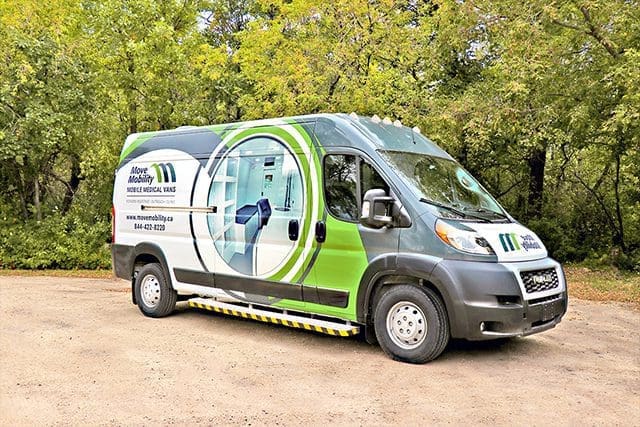
When you started this journey, you probably had one big question: How in the world do I start a mobile dental clinic in Canada? You saw the challenges—people in underserved areas struggling to get dental care, long wait times, and communities without access to proper treatment. You knew something had to change.
Now, you have a roadmap to make it happen. You’ve learned:
- The current state of dental care in Canada and why mobile dental units are needed
- How to choose the right vehicle for your mobile dental clinic
- The licensing, regulations, and compliance steps required to operate legally
- Funding options, grants, and partnerships that can help make your clinic financially possible
- How to plan daily operations and logistics to keep your clinic running smoothly
I’m passionate about helping organizations like yours find the right solutions to bring care to people all over Canada. At MoveMobility, we’ve spent over two decades working with public health, First Nations communities, and outreach organizations to build mobile medical units that actually work for Canadian communities. We know the challenges—harsh weather, long distances, specific customization, and tight budgets—and we design vehicles that meet those realities head-on.
I know you care deeply about making a difference, and that’s exactly why we do what we do. If you have questions or want to explore mobile dental clinics a bit further, click the button below to chat with me.
If you’re not ready to talk just yet, I’ve got a few more resources to help you learn more. Check them out below!
- How do mobile dental clinics help rural communities without a dentist?
- Fixed dental clinics vs. mobile dental clinics
- Can your mobile dental clinic benefit from the Canadian Dental Care Plan?


